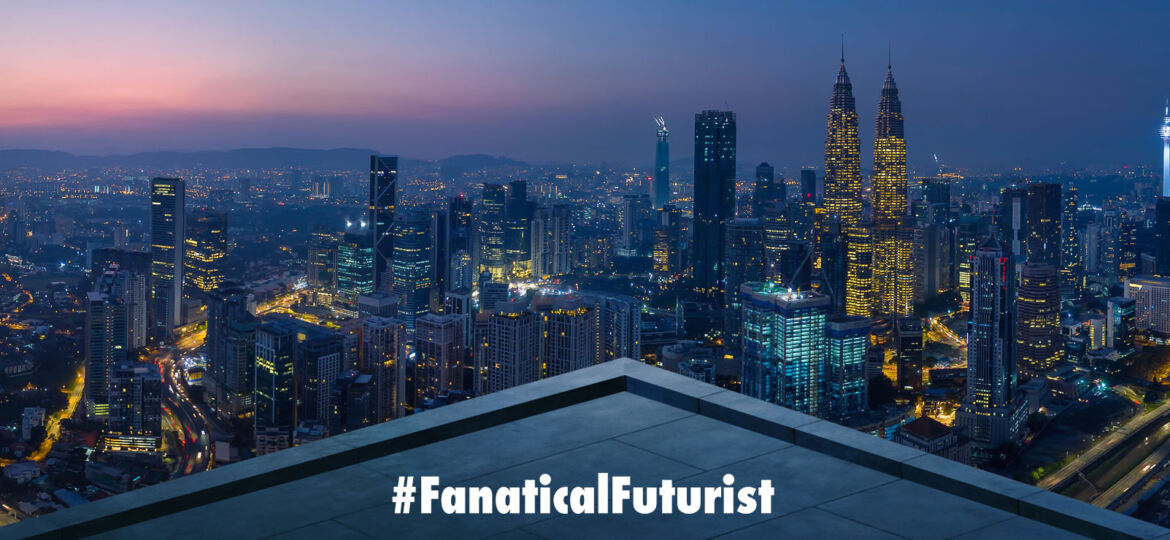
WHY THIS MATTERS IN BRIEF
AI is taking on more and more challenges, and “grunt work,” and now it’s starting to design our cities and communities.
 Interested in the future and want to experience even more?! eXplore More.
Interested in the future and want to experience even more?! eXplore More.
For the past couple of years, as I’ve watched the rise of semi and fully autonomous vehicles and cranes on construction sites, the development of 3D printed buildings, communities, and even skyscrapers, and the emergence of intelligent drones that give us a clear pathway to fully autonomous construction sites, one of the next steps I’ve talked about at my keynotes is the use of Artificial Intelligence (AI) to help us design buildings, communities, and one day even cities. And now, as I see the rise of so called Creative Machines in other industries that are designing everything from aircraft parts, clothes and trainers, to furniture and space rovers, the day is almost here after a Norwegian company called Spacemaker secured $25million in funding from investors.
It’s no secret that by 2050 the world will be home to nearly 10 billion people, some 2.5 billion more than the planet’s population today, and that two-thirds of those will live in cities. The need, therefore, to “optimise urban living environments” is why Spacemaker is building what it calls “the world’s first commercial platform that uses AI to help architects, urban planners, and developers make better decisions faster,” according to company cofounder and CEO Håvard Haukeland.
Last week the company announced a $25 million round of funding co-led by Atomico and Northzone, with participation from a host of industry investors, including Nordic property developers NREP and Obos, two of the company’s clients, and UK real estate tech fund Round Hill Ventures.
Designing a community or city using AI
Founded in 2016 Spacemaker has created simulation software that manages the computational task of “designing the layout of multi-building residential developments,” in short communities, that lets architects do what they do best and focus on the creative side of things and the finer details of the development.
Input some numbers and the parameters you want, such as regulatory requirements and other project information, and the platform will spit out hundreds of design options within just a couple of hours.
“Today, developers, architects, and urban planners only have the tools to explore a few options for building [and community] design as they try to optimize for everything from environmental factors to regulations,” Haukeland said. “With Spacemaker, they can, for the first time, generate and assess billions of possible design solutions in only hours.”
The platform, which is available via a monthly subscription, can optimise a layout based on any number of prerequisites, from maximizing sun exposure in the community to minimizing noise and wind from, for example, road noise. Developers can then dig down into each proposal to see what does and doesn’t work and what the trade-offs are for each plan.
Spacemaker said machine learning allows its optimization algorithms to improve after every use. It learns by “interpreting the user’s choices and combining it with the massive amounts of data collected in the analysis of each site,” said Spacemaker cofounder and CTO Carl Christensen.
“The AI sees patterns in the infinite complexity of interrelated options and consequences in a project,” he continued. “In our case, that can involve complex factors such as sunlight, rain water, or traffic noise. Based on your input preferences, it predicts what and where to change the project to improve on it in a certain way. Since there’s always a large number of ways to ‘strike the balance’ between different preferences, the AI looks for distinctly different answers, called project proposals, that express different trade-offs.”
Spacemaker fits into a broader trend of startups and investors pushing a sustainable city agenda that covers cleaner transport, such as electric scooters, and finding new ways to cut waste.
Then there is the inefficiency currently blighting the construction industry. Some estimates suggest that construction will be a $12 trillion market by 2022, but the industry is not renowned for its efficiency — reports indicate that construction is among the lowest-performing sectors in terms of productivity, due in part to the lack of digitization. This is changing, however, and we’ve seen a slew of VC investments in construction in recent years.
“The global construction industry has a significant productivity problem, under-performing the overall economy and costing it over $1 trillion value each year,” said Atomico partner Ben Blume, who now joins Spacemaker’s board. “With 2.5 billion more people set to live in cities by 2050, we must find ways to provide sufficient housing for these growing urban populations.”
With all the hullabaloo about AI stealing jobs, Spacemaker is keen to stress that its platform is more about “augmenting humans” rather than replacing them by combining the best parts of human creativity and machine power.
“Spacemaker’s platform is a powerful tool in an under-digitized industry, creating value across the entire prebuild process for developers, architects, planning departments, and ultimately, inhabitants,” added Northzone partner Michiel Kotting, who also joins Spacemaker’s board. “It is a perfect example of AI augmenting human expertise, creating efficiencies and improving sustainability.”
Spacemaker already claims some big clients from across the Nordics, including investors NREP and Obos. The company raised a $7 million seed round last year, and with another $25 million in the bank it’s gearing up to invest in global expansion, as well as construction AI research, product development, and building out its engineering and commercial teams. And inevitably, one day in the next couple of years I’ll likely be writing an article about a new platform that can design an entire city and all the infrastructure and buildings within it by itself… and that could be an interesting city to live in!

















[…] way possible. A company called Spacemaker has already created simulation software that uses AI to help architects and urban planners make better development and planning decisions, […]